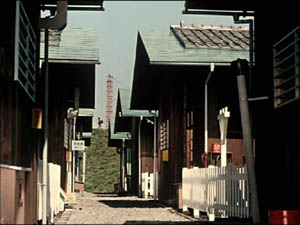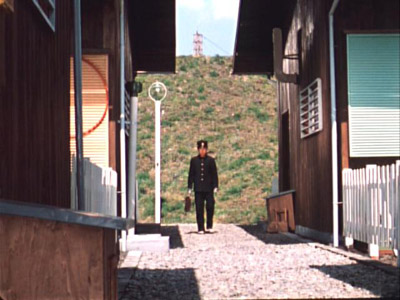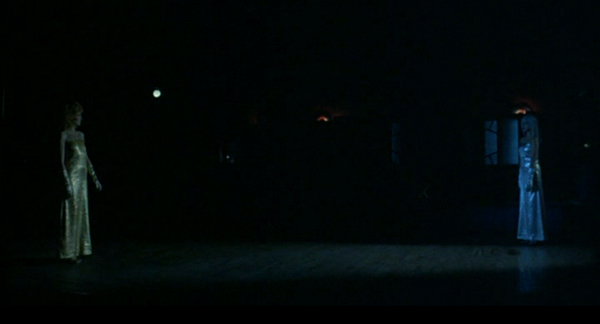From the Monthly Film Bulletin, no. 502, November 1975. — J.R.


OHAYO (GOOD MORNING)
Japan, 1959
Director: Yasujiro Ozu
Cert — U. dist — Cinegate. p.c — Shochiku/Ofuna. p — Shizuo Yamanouchi. sc — Yasujiro Ozu, Kogo Noda. ph — Yushun Atsuta. col — Agfacolor. ed —Yoshiyasu Hamamura. a.d —Tatsuo Hamada. m — Toshiro Mayuzumi. l.p — Chishu Ryu (Keitaro Hayashi), Kuniko Miyake (Tamiko Hayashi), Yoshiko Kuga (Setsuko Arita, Tamiko’s Sister), Koji Shidara (Minoru Hayashi, Older Son), Masahiko Shimazu (Isamu Hayashi, Younger Son), Keiji Sada (Heichiro Fukui, English Teacher), Haruo Tanaka (Pencil Salesman), Haruko Sugimura (Mrs. Haraguchi), Miyaguchi (Mr. Haraguchi), Eiko Miyoshi (Mrs. Haraguchi’s Mother), Eijiro Tono (Tomizawa), Teruko Nagoako (Tomizawa’s wife), Sadako Sawamura (Mrs. Okubu), Kyoko Izum and Hasabe (Couple with TV Set), Toyo Takahashi. Read more
From Sight and Sound (Autumn 1975).
I was shocked to learn yesterday [in December 2011] of the death of Gilbert Adair, a close friend during the mid-70s (when both of us were living in Paris, and for some time later, after I moved to London ahead of Gilbert). This collaborative article, which I instigated, assigning the middle sections to Gilbert and to Michael Graham (also, alas, no longer alive), is being posted now in memory of our friendship. (With Lauren Sedofsky, Gilbert and I had also already collaborated on an interview with Rivette the previous year, which was posted here yesterday.) And because of the unusual length of this article, I’m running it in two parts; the first half, with sections by me and Gilbert about Duelle, appeared a few hours ago. — J.R.
3

Like any Rivette film, Le Vengeur (2) took shape gradually, drawing on a large number of deliberately chosen ideas and as many fortuitous circumstances. As important as Rivette’s interest in Tourneur’s The Revenger’s Tragedy (drawn to his attention by Eduardo De Gregorio), and the curious traditions surrounding the period of Carnival, was the availability of Geraldine Chaplin and Bernadette Lafont together with that of a group of dancers from Carolyn Carlson’s company. Read more
From Sight and Sound (Autumn 1975).
I was shocked to learn of the death of Gilbert Adair, a close friend during the mid-70s (when both of us were living in Paris, and for some time later, after I moved to London ahead of Gilbert). This collaborative article, which I instigated, assigning the middle sections to Gilbert and to Michael Graham (also, alas, no longer alive), is being posted or reposted in memory of our friendship. (With Lauren Sedofsky, Gilbert and I had also already collaborated on an interview with Rivette the previous year, which was posted here yesterday.) And because of the unusual length of this article, I’ll be running it in two parts; the second half, with sections by me and Michael Graham about Noroît, will appear a few hours from now. — J.R.


In theory, from the vantage point of early spring, it would go something like this: four movies to be shot consecutively, each one an average-length feature to be filmed in three weeks; editing to begin after the fourth is shot, the four films edited in the order of their successive releases. Read more





